
Guest author: Alan Cameron
This article has been written by a guest author. If you’re an educator or music industry professional who is interested in contributing an article to the Midnight Music blog, you can apply here.
Welcome to another blog post written by a guest author. The author of today’s article is Alan Cameron – a former classroom music teacher for 20 years, who now works freelance as an Education Consultant, including work for Soundtrap, the online digital recording studio.
In this article, Alan Cameron shares an amazing experience he had working with young teenagers and how students can work together using DAWs such as Soundtrap.
– Katie Argyle
Songwriting with Young Teenagers: Then and Now
by Alan Cameron
Songwriting and technology pre-1998
If you’ve been working with young people as long as I have in creative music making sessions, have you not often been truly amazed at what kids can achieve?
In 1998 (perhaps before you were born!?) my music class of 20 kids were aged around 14 and I was keen to try some innovative approaches with them. The key components of the music course they followed were performing, listening and inventing (as it was called).
Performance work was arranged and facilitated in class and also with peripatetic tutors. All students studied two instruments which for some included voice as an ‘instrument’. Listening was well-established with areas of study clearly defined. They enjoyed the performance aspect but for many ‘listening’ was less than stimulating. I aimed to integrate performing, listening and inventing as one entity where they would learn concepts e.g. ‘legato’ through all 3 areas of the course.
‘Inventing’, in my experience is an area which can lack consistency of approach and quality across schools. The students (from a traditionally working class area of the city) loved (their) music, singing, dancing etc. but Gregorian plainsong and the motets of Lassus was definitely not their bag! Even Mozart got a hard time.
The songwriting competition that changed everything
It was very timely when a package including a VHS video (!?) popped through the post to the school inviting us to submit a ‘Song for the Millennium’. This invitation had been given to all schools in the UK in 1998. On the video, which we all watched, Sir George Martin (Beatles’ Producer) spoke about the power of music and how a great song can impact people’s lives. He issued a challenge in this short video for schools to compose their own songs and send a cassette tape (??!!) of their best efforts in for judging.
On the video, George Martin highlighted the importance of having a good initial idea and theme for the song, which, for the sake of the competition he provided as being (as best as I can remember) – A Song for the Millennium / looking to a bright future / how young people can positively impact the world etc. under the overall title ‘Voices of Promise’.
My class was on a two year music course (August 1998 – June 2000), so the timing was perfect and the challenge was just what we needed to give a clear focus and engender a collaborative spirit in the tricky area of ‘inventing’. As well as individual inventing tasks/projects, we decided to develop a collaborative songwriting project with the Beatles’ Producer’s invitation as our stimulus. And perhaps we might win?!
Collaboration with 20 students
So what did we do? As a class, we discussed what makes a good song. We shared thoughts and ideas about which songs we knew and liked. Why did we like them? How did they start? How did they finish? Was there a story told, a message? How long should a good pop song last? What shape might it take? Does it need an intro? What about an instrumental solo/section or a middle 8? What is a middle 8 or bridge? Several lessons looked at these questions. They worked in pairs, in groups and on their own exploring and analysing how songs are structured.
After a period of a week or so I put the challenge to the class and said ‘How shall we go about writing a Song for the Millennium?’ ‘What do you want to do?’ We decided it would be very difficult to write one song as a class with so many views or no views expressed by others at all. However, the competition was asking us to submit a song.
The blank piece of paper before the songwriter can be daunting. We needed some starters for 10, some building blocks, a strategy. I split the class of 20 up into 4 groups (or bands) ensuring as far as possible a mix of friends balanced with ability/aptitude/leaders/followers. This was in part intuitive and guesswork but it was important for me to try to create groups that could work most effectively. These 4 groups were then challenged to create a verse or a chorus, (or both) with a lyric reflecting the theme of ‘Children of the world/hope for the future’ etc.
In preparation for this moment, we had worked on various concepts gaining understanding of pulse, tempo, beat, rhythm, pattern and structure. The groups understood they would start songwriting through a collaborative approach where each other’s views would be respected and considered. This was quite a big step in working together, essentially problem solving. We didn’t at this stage discuss instrumentation, melody, mode, keys etc.
However, what happened next was a delightful surprise to me. In writing/shaping stanzas for verses and/or a chorus, the groups naturally put musical phrases to their words. After a couple of sessions working in these groups, each of the 4 groups were able to perform to the rest of the class their initial efforts. All groups had one or more able and willing person to sing their invention; some groups used a keyboard (with chordal backing) or untuned percussion to accompany the singing.
Peer evaluation
The next challenge I gave them was that after each short group performance, the rest of the class had to critically evaluate their efforts. Only positive comments were taken at this point. ‘We’ve listened to Group A’s song; what did we like about it?’ The comments could refer to the message/words, the tempo/beat/groove, a good hook, catchiness etc. In this way, peer feedback on all the 4 groups songs was given.
After each group had performed and received feedback from the class, members in each group were then challenged to share how they might improve and develop their song. This was done openly, and the students became totally in a zone of shared creativity and focus. Following this reflection and self-evaluation, they continued working in their groups to develop their ideas.
Informal teacher-led discussions encouraged students to consider chord choices/harmony, and the importance of keeping it simple initially and how the song may benefit from a ‘hook’ and repetition. The class was given another challenge. For the purposes of the competition, we had to submit one song. How would we choose which of the 4 songs were best? The songs were now developing into presentably structured pieces lasting up to around 2 minutes. Would the students have a vote on which was the best song? Would I, the teacher decide?
A clear, fair, transparent, agreed route on this was essential. I suggested to the pupils that we get an external judging panel from within the school to judge which of the 4 songs we should put forward for our entry to ‘A Song for the Millennium’. They liked the idea that I wouldn’t decide. The students then discussed which teachers we would invite to be on the panel. To give them ownership of the process, the class proposed the names of 4 teachers from across the school to make the decision.
The panel of 4 teachers represented the subject areas of English, Home Economics, Chemistry and Maths. Each group, in turn, performed their song to the panel. At the end of this process, the panel gave feedback to the whole class, saying what they liked about each song. One song was chosen by the panel and this was the song we would enter as a school. Everyone was happy about the decision. The next step was for us all to work on this song to further improve it.
Access to recording technology
I’ve outlined above how my class worked on a songwriting project. Around 20 years ago, we didn’t have access to the technology now available. We did, however, have a local community recording studio and we took the class there to make as good a recording as we could. At this point, I’m not going to tell the story of the recording process in that local community studio. Suffice to say, that our class won right through from 7000 UK school entries to perform in London next to the Millennium Dome in front of 3000 people and also record the song with Sir George Martin as Executive Producer. 22 schools (including ours) featured on a CD ‘Voices of Promise’. 100,000 were sold. To say we were all thrilled is an understatement.
We were very lucky to be able to record our initial efforts in a community recording studio. What about the hundreds (and indeed thousands of schools) who couldn’t do that? If recording music had been more accessible then, wouldn’t it have been so much better for all schools involved in the project?
Technology options for recording in today’s classroom
‘’Fast-forwarding’’ 20 years I’m going to share a little of how teachers currently could support their students in making their own recordings. Technology in many areas of education has moved on dramatically in recent years. In music, it’s now possible for young people to work collaboratively in making their own music with a variety of new tools.
An online digital audio workstation (DAW) like Soundtrap is a great tool for students to work together in creating their own pieces. One key benefit of Soundtrap for teachers and young people is that it’s really easy to use – there is no steep learning curve to achieve great instant results. There are many music loops that kids will enjoy selecting from. Building a piece through multi-tracking with loops is easy, and when adding loops to various parts both the tempo and thekey are automatically matched up. Other musical parts can be added easily through using a midi connected keyboard or the computer microphone or if you wish, a USB connected microphone.
Because Soundtrap is a browser-based recording tool, kids in class can continue their work on a different device in their own house, or even on the bus on the way home! They can collaborate with their classmates in or out of school using the brilliant collaboration features. The chat function and video-link facilities in Soundtrap are already features young people are familiar with. When engaged in collaborative music-making, great dialogue, ‘lightbulb’ moments, leadership skills, effective team working and self-esteem for participants are all enhanced.
Opportunities for creativity in music-making and songwriting are greatly enhanced these days by a wide variety of accessible technology resources. Many (but not all) songs are written collaboratively e.g. Lennon/McCartney. One of Soundtrap’s key features is its capability to support collaborative songwriting for young people in a safe online ‘walled garden’ environment. Currently, collaborative songwriting projects using Soundtrap are underway, not only between students in the same class/school but also between schools internationally. This is an exciting development allowing students to share their creativity on a global platform.
If 20 years ago schools could have had access to an inexpensive, easy-to-use recording tool such as Soundtrap, the ‘Song for the Millennium’ project would have been even more inclusive and opened up new creative opportunities for students in schools across the UK.
About the author

Download a copy of this blog post
Would you like to take a copy of this with you? Click on the download button below and we’ll send a copy straight to your email inbox. You’ll also receive weekly music tech tips and news (if you don’t already). You can unsubscribe at any time.

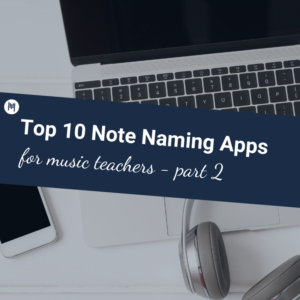
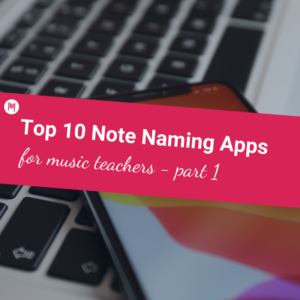
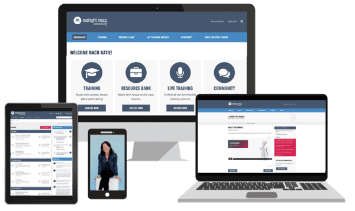


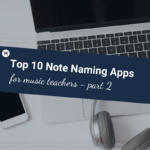
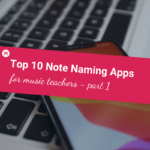
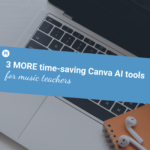
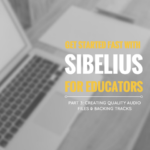
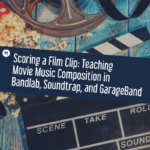
One Comment
[…] Alan Cameron, Education Adviser with SoundTrap and classroom teacher, gave a ‘memoir’ on a songwriting challenge he… Here’s the post on Midnight Music’s blog. […]